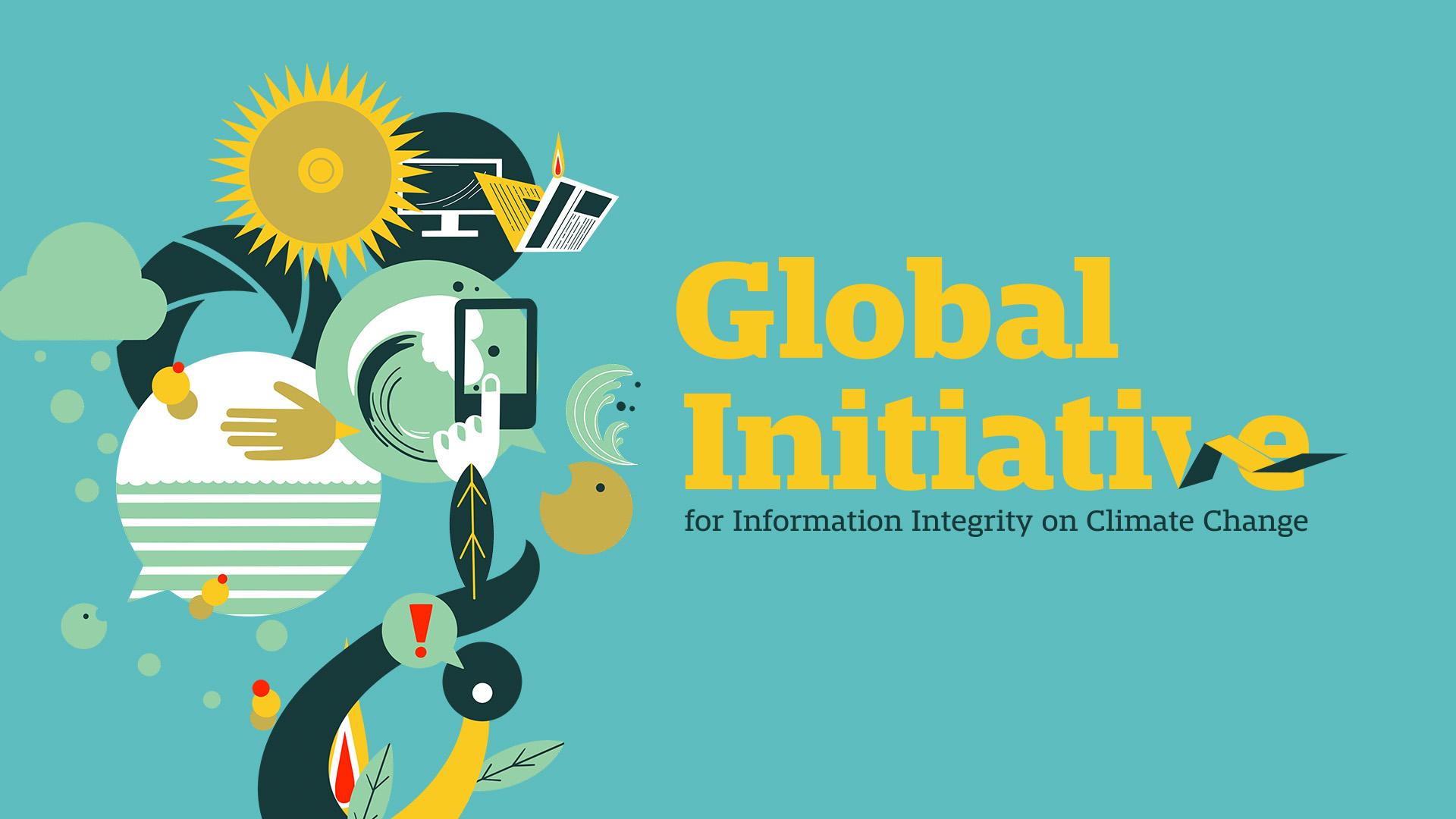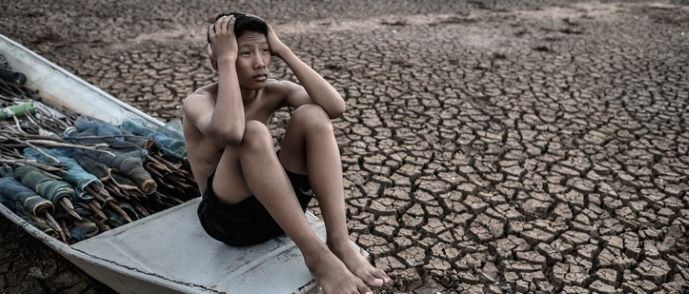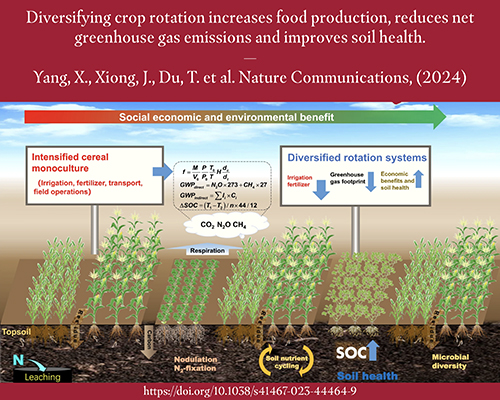Report on the Evolving Role of Spiritual Leadership in Addressing Sustainable Development Goals 3 and 13
Introduction: Climate Change, Well-being, and Institutional Response
This report details the increasing role of spiritual and faith-based leaders in addressing the multifaceted impacts of climate change, with a significant focus on Sustainable Development Goal 13 (Climate Action) and Sustainable Development Goal 3 (Good Health and Well-being). It examines how chaplains and spiritual organizations are adapting their practices to support communities facing the psychological and emotional consequences of environmental degradation, thereby contributing to stronger, more resilient institutions as per SDG 16 (Peace, Justice and Strong Institutions).
Climate Impacts on Maritime Sector and Workforce
Seafarers’ Experiences and the Imperative for SDG 14
The experiences of maritime workers provide direct evidence of the escalating climate crisis, impacting both SDG 14 (Life Below Water) and SDG 8 (Decent Work and Economic Growth). Maritime Chaplain Thomas Kircher of Seafarer’s Friend documented firsthand accounts from international seafarers that align with scientific findings on climate change.
- Seafarers consistently reported experiencing larger waves and stronger winds, corroborating NASA research on the intensification of storms due to climate change.
- These hazardous conditions directly threaten the well-being and safety of maritime workers, highlighting challenges to achieving decent work under SDG 8.
- The observed changes at sea underscore the urgent need for climate action (SDG 13) to protect marine ecosystems and the global workforce dependent on them.
Addressing Climate-Induced Mental Health Challenges in Alignment with SDG 3
The Rise of Climate-Related Psychological Distress
The psychological toll of climate change represents a significant challenge to achieving SDG 3 (Good Health and Well-being). Faith leaders are increasingly focusing on this spiritual and mental health crisis.
- A 2022 survey by the Yale Program on Climate Change Communication found that one in 10 Americans experienced consistent anxiety due to climate change.
- Nearly the same number reported symptoms of depression, while a quarter of respondents actively avoided thinking about the issue.
- Spiritual leaders like Kircher assert it is vital for faith communities to facilitate conversations and manage emotional responses such as anger, grief, and fear related to climate impacts.
Evolution of Chaplaincy to Meet Modern Sustainability Challenges
Broadening the Scope of Spiritual Care
The field of chaplaincy is evolving from its traditional roots to address contemporary societal issues, including the climate crisis. This adaptation reflects the changing needs of a diverse population and the emergence of specialized fields like eco-chaplaincy, which directly supports progress on the SDGs.
- The Chaplaincy Institute of Maine: This institution ordains interfaith ministers who integrate spiritual care with pressing global issues. Its graduates are applying their training to address the relationship between spirituality and environmental challenges.
- Eco-Chaplaincy and Climate Grief: Eco-chaplain Circe Moss MacDonald provides spiritual services focused on processing “climate grief.” Her work aims to reconnect individuals with the environment, fostering an emotional foundation for climate action (SDG 13) and promoting mental well-being (SDG 3).
- Support for Climate Activism: Community and Climate Chaplain Gabe Burford provides spiritual support to climate organizers and activists. His work focuses on building trust, countering fatalism, and empowering individuals to find agency, which is essential for sustained public engagement in achieving climate goals.
Strategic Institutional Focus and Partnerships for the Goals (SDG 17)
The BTS Center’s Mission for a Climate-Changed World
Institutions are strategically realigning their missions to address the root causes of the climate crisis. The BTS Center in Portland exemplifies this shift, focusing its work on “Spiritual leadership for a climate-changed world.”
- The Center’s leadership posits that the primary environmental problems are not technical but spiritual, citing “selfishness, greed and apathy” as core issues that faith communities are uniquely positioned to address.
- This approach directly supports SDG 13 by tackling the human behaviors that impede climate action.
The Climate Conscious Chaplaincy Program
In a clear demonstration of SDG 17 (Partnerships for the Goals), the BTS Center collaborated with the national Chaplaincy Innovation Lab to launch a climate conscious chaplaincy program. This initiative aims to integrate climate awareness into all forms of spiritual care.
- The program equips chaplains in diverse settings, such as universities and hospitals, to address the specific ways climate change affects their communities.
- This includes supporting students experiencing climate-related anxiety about the future and preparing for increased patient loads in hospitals due to climate-driven health impacts.
- The core objective is to redefine the work of faith leaders, ensuring they are prepared to serve communities effectively in a world fundamentally altered by climate change, thereby advancing both SDG 3 and SDG 13.
Analysis of Sustainable Development Goals in the Article
1. Which SDGs are addressed or connected to the issues highlighted in the article?
The article highlights several issues that connect to multiple Sustainable Development Goals. The primary themes of climate change impacts, mental and spiritual well-being, and the health of marine environments directly link to the following SDGs:
- SDG 3: Good Health and Well-being: The article extensively discusses the mental and spiritual health consequences of climate change, such as anxiety, depression, grief, and fear. It details the work of chaplains in addressing these emotional and spiritual needs within communities.
- SDG 13: Climate Action: This is the central theme of the article. It explicitly mentions the effects of climate change, including “more frequent marine heatwaves and more intense storms,” and focuses on building community and individual resilience through spiritual and emotional support. The entire concept of “eco-chaplaincy” is a response to the climate crisis.
- SDG 14: Life Below Water: The narrative begins with a maritime chaplain and the experiences of seafarers who are firsthand witnesses to the changing ocean conditions, such as “bigger waves and stronger winds.” The mention of “marine heatwaves” also directly relates to the health of marine ecosystems.
- SDG 8: Decent Work and Economic Growth: The article touches upon the working conditions and well-being of seafarers, who are described as migrant workers on “three- to nine-month stints” dealing with “struggles with isolation.” The chaplain’s role in offering practical and emotional support to these workers connects to ensuring their well-being in their work environment.
2. What specific targets under those SDGs can be identified based on the article’s content?
Based on the issues discussed, the following specific SDG targets can be identified:
- Target 3.4: “By 2030, reduce by one third premature mortality from non-communicable diseases through prevention and treatment and promote mental health and well-being.” The article’s focus on “climate grief,” anxiety, and depression directly relates to the promotion of mental health and well-being. The work of eco-chaplains and spiritual leaders is presented as a method to help people process these emotions and improve their spiritual and mental well-being in the face of climate change.
- Target 13.1: “Strengthen resilience and adaptive capacity to climate-related hazards and natural disasters in all countries.” The article describes seafarers facing climate-related hazards like “bigger waves and stronger winds.” Furthermore, the work of chaplains helping communities and individuals deal with the emotional fallout of climate change (“anger or grief or fear”) is a form of strengthening psychological and spiritual resilience and adaptive capacity.
- Target 13.3: “Improve education, awareness-raising and human and institutional capacity on climate change mitigation, adaptation, impact reduction and early warning.” The article details the efforts of faith leaders and institutions like the BTS Center to start conversations, run programs like “climate conscious chaplaincy,” and engage in “climate advocacy.” This represents a clear effort to raise awareness and build human and institutional capacity to address the spiritual and emotional dimensions of climate change.
- Target 14.2: “By 2020, sustainably manage and protect marine and coastal ecosystems to avoid significant adverse impacts, including by strengthening their resilience…” While the article does not discuss managing or protecting ecosystems, it directly highlights the “significant adverse impacts” that this target seeks to prevent, citing NASA research showing that “climate change has led to more frequent marine heatwaves and more intense storms.”
- Target 8.8: “Protect labour rights and promote safe and secure working environments for all workers, including migrant workers…” The article’s initial focus on the maritime chaplain’s work with seafarers—migrant workers facing isolation and increasingly dangerous sea conditions (“stronger winds”)—connects to the goal of promoting a secure working environment and supporting worker well-being.
3. Are there any indicators mentioned or implied in the article that can be used to measure progress towards the identified targets?
Yes, the article contains both quantitative and qualitative information that can serve as indicators for measuring progress.
- For Target 3.4 (Mental Health): The article provides a direct quantitative indicator by citing a “2022 survey by the Yale Program on Climate Change Communication,” which found that “one in 10 Americans reported experiencing consistent symptoms of anxiety because of climate change, with almost as many reporting symptoms of depression.” This data measures the prevalence of mental health challenges related to climate change.
- For Target 13.1 (Resilience to Hazards): A qualitative indicator is the testimony from seafarers who “all had stories of bigger waves and stronger winds.” This anecdotal evidence indicates an increase in the intensity of climate-related hazards at sea.
- For Target 13.3 (Awareness-raising): The article implies several qualitative indicators of increased institutional capacity. These include the coining of the term “eco-chaplaincy” in 2005, the establishment of a “climate conscious chaplaincy program” by the BTS Center, and the general shift in focus for faith leaders and organizations towards “climate advocacy.” The growth and activities of these programs serve as a measure of increased awareness and capacity.
- For Target 14.2 (Marine Ecosystems): The article mentions “more frequent marine heatwaves” as a consequence of climate change, according to NASA. The frequency and intensity of marine heatwaves is a specific, measurable indicator of adverse impacts on marine ecosystems.
- For Target 8.8 (Worker Well-being): The description of seafarers’ “struggles with isolation” on long voyages is a qualitative indicator related to the well-being and security of workers in the maritime industry.
4. Table of SDGs, Targets, and Indicators
| SDGs, Targets and Indicators | Targets | Indicators |
|---|---|---|
| SDG 3: Good Health and Well-being | 3.4: Promote mental health and well-being. | Quantitative data from a 2022 Yale survey: “one in 10 Americans reported experiencing consistent symptoms of anxiety because of climate change, with almost as many reporting symptoms of depression.” |
| SDG 13: Climate Action | 13.1: Strengthen resilience and adaptive capacity to climate-related hazards. | Qualitative testimony from seafarers about experiencing “bigger waves and stronger winds,” indicating increased climate-related hazards. |
| SDG 13: Climate Action | 13.3: Improve education, awareness-raising and human and institutional capacity on climate change. | Qualitative evidence of new roles and programs, such as the emergence of “eco-chaplaincy” and the creation of a “climate conscious chaplaincy program.” |
| SDG 14: Life Below Water | 14.2: Protect marine and coastal ecosystems to avoid significant adverse impacts. | Specific mention of “more frequent marine heatwaves” as an adverse impact on the marine environment. |
| SDG 8: Decent Work and Economic Growth | 8.8: Promote safe and secure working environments for all workers. | Qualitative description of seafarers’ “struggles with isolation” during long work stints, highlighting challenges to worker well-being. |
Source: themainemonitor.org







